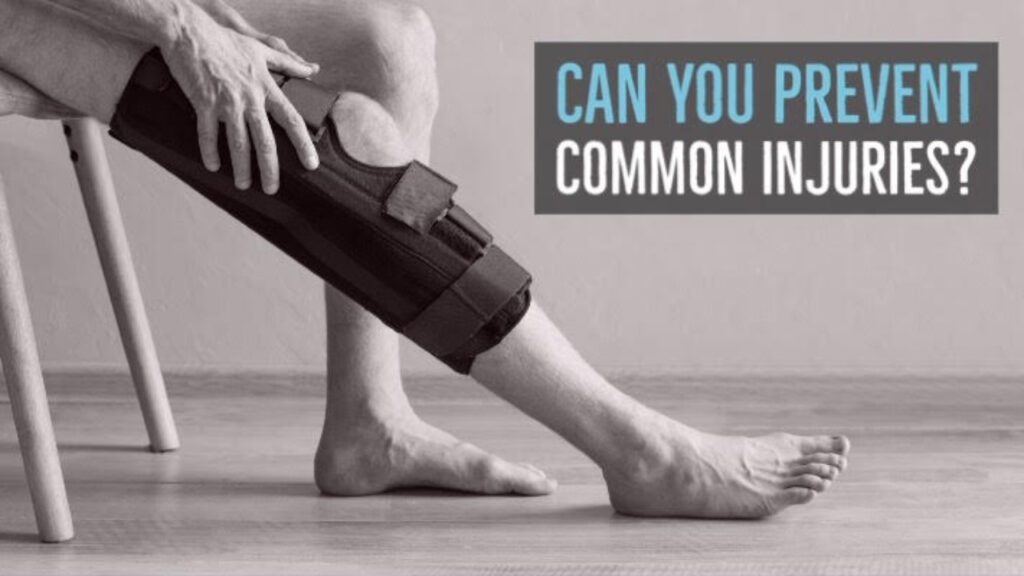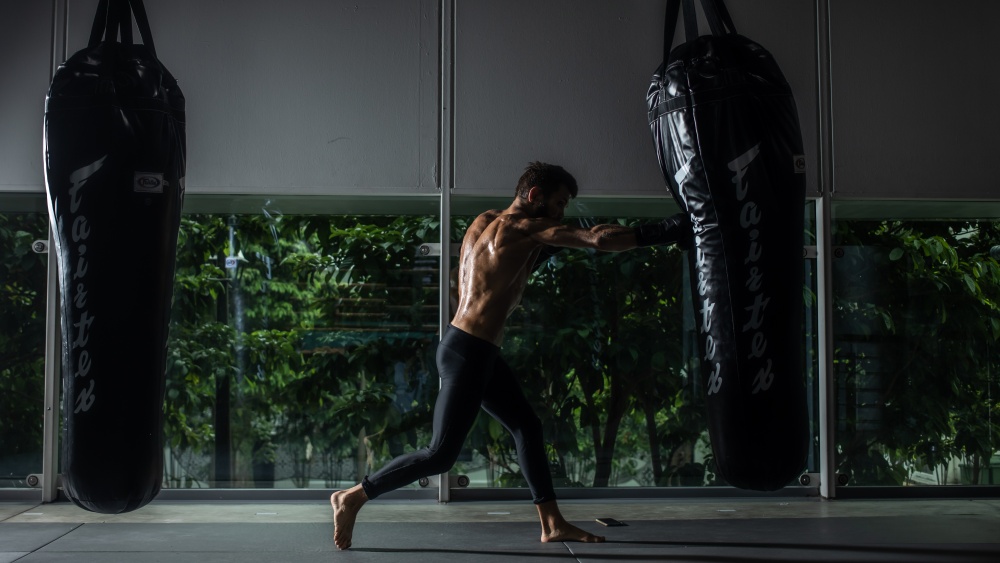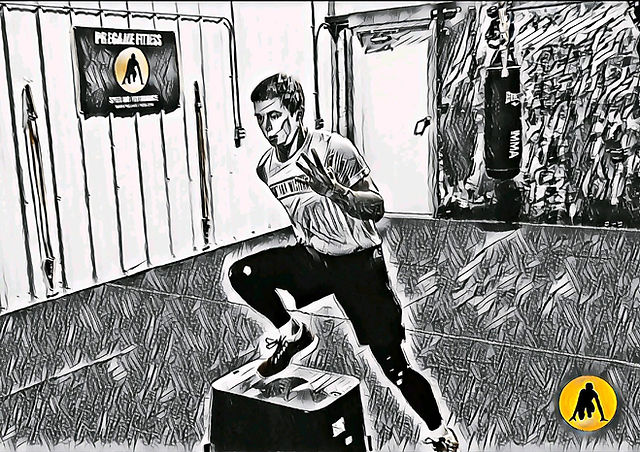In the world of mixed martial arts (MMA), a sport that demands both skill and strategy, the importance of proper footwork and movement cannot be overstated. Whether you are an aspiring fighter or a seasoned practitioner, understanding the significance of these foundational elements is crucial in preventing injuries and maximizing performance inside the octagon. By maintaining proper footwork and fluid movements, fighters can not only evade attacks more effectively but also generate more power in their strikes. In this article, we will explore the critical role that footwork and movement play in injury prevention in MMA, highlighting key techniques and strategies that can help fighters stay safe and excel in their fights.

Footwork Techniques
Understanding Footwork in MMA
In mixed martial arts (MMA), footwork plays a crucial role in ensuring success inside the octagon. It involves the coordinated movement of your feet to maintain balance, agility, and control. Understanding the fundamentals of footwork is essential for any fighter looking to excel in the sport.
When it comes to footwork, there are several key components to consider. First and foremost, agility and balance are of utmost importance. These qualities allow you to move quickly and efficiently while maintaining stability and control. Proper footwork enables you to transition smoothly between offense and defense, giving you a significant advantage in the cage.
Importance of Agility and Balance
Agility and balance are two of the most critical aspects of footwork in MMA. Agility allows you to react quickly to your opponent’s movements, change directions, and avoid strikes. It enables you to be light on your feet, making it harder for your opponent to land significant blows. On the other hand, balance ensures that you maintain stability and control, even when engaging in fast-paced exchanges or grappling situations.
Without adequate agility and balance, you’ll be at a disadvantage in the cage. Your movements will become predictable and easily countered, leaving you susceptible to strikes and takedowns. By developing these traits through proper footwork techniques, you’ll be able to move with finesse and precision, making it increasingly challenging for your opponent to land a clean shot.
Proper Stance and Weight Distribution
A proper stance is crucial for effective footwork in MMA. It provides a solid foundation and allows for optimal weight distribution. The stance should be slightly wider than shoulder-width apart, with your knees slightly bent and your weight evenly distributed between both legs. This stance allows for quick movements in any direction and provides a stable base for strikes, takedowns, and grappling exchanges.
Maintaining proper weight distribution is essential during footwork. It ensures that you can react quickly while maintaining balance and stability. Distributing your weight evenly allows for smooth transitions between offense and defense, keeping you one step ahead of your opponent. Practice maintaining a balanced stance during training sessions to build muscle memory and improve your overall footwork skills.
Utilizing Angles and Lateral Movement
One of the key elements of footwork in MMA is utilizing angles and lateral movement. By moving laterally, you can create openings for strikes while avoiding your opponent’s attacks. It allows you to control the distance and dictate the pace of the fight. Angles are crucial for evading strikes and setting up counterattacks, giving you a significant advantage in the cage.
To effectively utilize angles and lateral movement, you need to be light on your feet and maintain proper body positioning. By pivoting and circling around your opponent, you can keep them off balance and create opportunities to land strikes or initiate takedowns. Practice moving laterally and angling off during training sessions to hone your footwork skills and become a more elusive and unpredictable fighter.
Mastering Pivot and Quick Directional Changes
Mastering the pivot and quick directional changes is essential for effective footwork in MMA. Pivoting involves rotating on the ball of your foot to change your direction rapidly. It allows you to change your angle of attack, create openings, and evade your opponent’s strikes. Quick directional changes, on the other hand, help you confuse your opponent and catch them off guard.
To master the pivot and quick directional changes, you must develop exceptional agility, balance, and coordination. Practice pivoting in different directions and changing directions quickly to improve your footwork skills. By mastering these techniques, you’ll be able to maintain control of the fight, create opportunities for strikes, and make it difficult for your opponent to anticipate your next move.
Benefits of Proper Footwork
Reducing Risk of Lower Extremity Injuries
Proper footwork plays a vital role in reducing the risk of lower extremity injuries in MMA. By maintaining proper balance and weight distribution, you minimize the strain on your muscles and joints, reducing the likelihood of sprains, strains, and other injuries. Good footwork also allows you to react quickly to avoid dangerous situations, minimizing the risk of getting caught in a compromising position.
Enhancing Striking Power and Accuracy
Effective footwork can significantly enhance your striking power and accuracy in MMA. By utilizing proper foot placement and weight transfer, you can generate more power and precision with your strikes. Footwork allows you to position your body correctly, optimizing your biomechanics and maximizing the impact of your strikes. This, in turn, increases your chances of finishing the fight or scoring points with the judges.
Improving Defensive Techniques
Proper footwork not only enhances your offensive capabilities but also improves your defensive techniques. By moving laterally, utilizing angles, and changing directions quickly, you can effectively evade your opponent’s strikes and minimize their effectiveness. Good footwork allows you to create distance, block or parry strikes, and counter with your own attacks. It gives you the ability to control the flow of the fight and protect yourself from unnecessary damage.
Creating Opportunities for Takedowns and Submissions
Effective footwork opens up opportunities for takedowns and submissions in MMA. By utilizing angles, lateral movement, and quick directional changes, you can set up your opponent and catch them off guard. Proper footwork allows you to close the distance, get within grappling range, and execute well-timed takedowns or submissions. It gives you the ability to dictate where the fight takes place and capitalize on your opponent’s vulnerabilities.
Heightening Overall Octagon Control
Proper footwork gives a fighter heightened overall octagon control. By mastering footwork techniques, you can control the pace, distance, and positioning of the fight. This control allows you to dictate the flow of the match and strategically exploit your opponent’s weaknesses. With enhanced octagon control, you’ll have a significant advantage over your opponent, increasing your chances of winning the fight.
Avoiding Common Footwork Mistakes
Overcommitting and Losing Balance
One common footwork mistake is overcommitting and losing balance. When fighters overextend their movements or throw strikes with too much force, they risk losing their balance and becoming susceptible to strikes or takedowns. It’s essential to maintain control and use precise footwork, avoiding overcommitment that could leave you off-balance and vulnerable.
Neglecting Proper Foot Placement
Neglecting proper foot placement is another common mistake in footwork. The placement of your feet sets the foundation for your strikes, takedowns, and overall movement. Neglecting proper foot placement can lead to ineffective strikes, compromised balance, and decreased power. Paying attention to your foot positioning and practicing correct foot placement techniques is crucial for maximizing the effectiveness of your footwork.
Failing to Maintain Active Footwork
Failing to maintain active footwork is a mistake made by many fighters. Active footwork involves consistently moving, pivoting, and circling to create openings and disrupt your opponent’s rhythm. Failing to keep your feet in constant motion renders your footwork predictable and makes it easier for your opponent to anticipate your movements. Always staying light on your feet and maintaining active footwork will keep your opponent guessing and give you a competitive edge.
Being Predictable with Movements
Being predictable with your movements is a major footwork mistake that can cost you dearly in a fight. If your opponent can anticipate your footwork patterns, they can easily counter your attacks and take advantage of your predictability. Incorporate a variety of footwork techniques, angles, and direction changes to keep your opponent guessing and prevent them from devising a successful strategy against you.
Forgetting to Incorporate Footwork Drills
Footwork drills play a crucial role in improving your footwork skills. Forgetting to incorporate these drills into your training regimen can hinder your progress and limit your potential in the cage. Footwork drills help develop muscle memory, coordination, balance, and agility. Regularly incorporating footwork drills into your training will enhance your footwork abilities and give you a significant advantage in competition.
Effective Movement Strategies
Circling and Cutting Off the Opponent
Circling and cutting off the opponent is an effective movement strategy in MMA. By circling around your opponent, you can control the distance and dictate the direction of the fight. This movement strategy allows you to evade strikes while opening up opportunities for counterattacks. Cutting off your opponent’s movement path is equally important in limiting their escape options and cornering them, making it easier for you to land strikes or execute takedowns.
Using Footwork to Close or Create Distance
Footwork can be used strategically to either close or create distance in a fight. If you’re looking to engage in close-quarters combat or execute a takedown, you can use footwork to close the distance and get within striking or grappling range. On the other hand, if you need to create distance to avoid strikes or reset the fight, footwork can help you retreat or move out of range. By mastering the art of controlling the distance, you’ll be in control of the fight and can dictate the pace according to your game plan.
Utilizing Level Changes and Angles
Utilizing level changes and angles is an effective movement strategy that can catch your opponent off guard. By changing your level, such as lowering your stance or dropping your center of gravity, you can create opportunities for strikes, takedowns, or submissions. Incorporating angles into your footwork allows you to attack from unexpected directions while making it harder for your opponent to counter effectively. Level changes and angles are valuable tools for outsmarting your opponent and gaining the upper hand in the fight.
Mixing Up Fast and Slow Movements
Mixing up fast and slow movements is a strategic footwork technique that keeps your opponent guessing and creates openings for your attacks. By varying the speed of your footwork, you can catch your opponent off guard and disrupt their timing. Quick, explosive movements can surprise your opponent and create opportunities for strikes or takedowns, while slower, deliberate movements can lull them into a false sense of security before launching a sudden attack. Mixing up your footwork speed is a valuable strategy for maintaining control and catching your opponent off guard.
Reacting and Countering with Footwork
Effective footwork allows you to react quickly to your opponent’s movements and counter effectively. By honing your footwork skills, you can develop the ability to read your opponent’s actions and respond with precise footwork. Reacting and countering with footwork involves evading strikes, creating openings, and launching your own attacks. By being one step ahead with your footwork, you can seize opportunities to turn the tide of the fight in your favor.

Conditioning for Footwork
Improving Cardiovascular Endurance
Conditioning plays a significant role in footwork mastery. Improving your cardiovascular endurance is essential for maintaining a high-paced fight and executing precise footwork techniques. Engaging in cardio-intensive exercises, such as running, biking, or swimming, can improve your stamina, allowing you to perform at your best for prolonged periods in the cage.
Building Leg and Core Strength
Building leg and core strength is crucial for effective footwork in MMA. Strong legs provide a solid foundation and support your body during intense movements and strikes. Incorporate exercises such as squats, lunges, and plyometric jumps into your training routine to build strength in your legs. Additionally, core strengthening exercises like planks and Russian twists develop stability and power, enabling you to execute dynamic footwork movements with ease.
Practicing Dynamic Balance Exercises
Practicing dynamic balance exercises is essential for footwork conditioning. By challenging your body’s balance, you can improve stability and control during movement. Exercises like single-leg squats, medicine ball throws, and balance board training can enhance your dynamic balance, reducing the risk of injuries and allowing for more precise footwork.
Incorporating Plyometric and Agility Drills
Plyometric and agility drills are excellent tools for conditioning your footwork. Plyometric exercises, such as box jumps, lateral bounds, and squat jumps, improve explosive power and quickness, making your footwork more explosive and dynamic. Agility drills, such as ladder drills and cone drills, enhance your speed, coordination, and reaction time. Regularly incorporating these drills into your training regimen will take your footwork to the next level.
Maintaining Proper Posture throughout Training
Maintaining proper posture throughout training is crucial for injury prevention and optimal footwork performance. Poor posture can place unnecessary strain on your muscles and joints, hindering your footwork abilities and increasing the risk of injury. Be mindful of your posture during exercises and training drills, ensuring proper alignment and technique. By maintaining good posture, you’ll be able to showcase your footwork skills at their best while reducing the risk of injury.
Injury Prevention Strategies
Wearing Appropriate Footwear
Proper footwear is an essential element of injury prevention in MMA. Wearing appropriate footwear, such as high-quality martial arts shoes or boots, provides adequate support and cushioning for your feet and ankles. These shoes help minimize the risk of sprained ankles, foot fractures, and plantar fasciitis. Investing in the right footwear is a small price to pay for long-term foot health and injury prevention.
Implementing Adequate Warm-Up and Cool-Down
Implementing an adequate warm-up and cool-down routine is vital for injury prevention in MMA. Warming up prepares your muscles, tendons, and ligaments for the physical demands of training or competition, reducing the risk of strains and sprains. A proper warm-up includes dynamic stretching, light cardio, and specific exercises to activate the muscles used during footwork. Cooling down with static stretching and gentle movements helps with muscle recovery and flexibility, preventing muscle imbalances and reducing post-training soreness.
Stretching and Flexibility Exercises
Stretching and flexibility exercises are essential for maintaining healthy footwork in MMA. Regular stretching routines increase range of motion, prevent muscle imbalances, and enhance overall flexibility. Focus on stretching the muscles of the feet, calves, hips, and lower back to maintain optimal foot and lower body function. Incorporating exercises like yoga and Pilates into your training routine can also help improve flexibility and promote injury prevention.
Listening to Your Body’s Warning Signs
Injury prevention in MMA requires listening to your body’s warning signs. If you experience pain, discomfort, or any abnormal sensations during training or competition, it’s important to address them promptly. Ignoring these signals can lead to more severe injuries and longer recovery times. Take breaks when necessary, rest when needed, and seek medical attention if any issues persist. By prioritizing your health and well-being, you can prevent further damage and ensure a long and successful career in MMA.
Seeking Professional Guidance and Rehabilitation
When it comes to injury prevention and management, seeking professional guidance and rehabilitation is crucial. If you experience a foot or lower leg injury, consult with a sports medicine professional or a specialized MMA injury rehabilitation expert. They can provide an accurate diagnosis, develop a customized treatment plan, and guide you through the rehabilitation process. Professional guidance ensures that you receive appropriate care and reduces the risk of recurrence or chronic issues.

Common Foot and Lower Leg Injuries
Sprained Ankles and Feet
Sprained ankles and feet are common injuries in MMA due to the high level of physical contact and movement involved. These injuries result from stretching or tearing the ligaments surrounding the ankle or foot joints. They can range from mild to severe, causing pain, swelling, and limited mobility. Proper footwork, footwear, and conditioning can help prevent sprained ankles and feet, but if an injury occurs, rest, ice, compression, and elevation (R.I.C.E) should be applied, and professional medical attention sought if necessary.
Achilles Tendonitis
Achilles tendonitis is a condition characterized by inflammation in the Achilles tendon, which connects the calf muscles to the heel bone. It commonly occurs due to overuse, improper training techniques, or inadequate footwear. Achilles tendonitis causes pain, swelling, and stiffness in the back of the ankle. This injury can be managed through rest, ice, stretching, and strengthening exercises. However, severe cases may require more extensive treatment, such as physical therapy or even surgery.
Plantar Fasciitis
Plantar fasciitis is a prevalent foot injury characterized by inflammation in the plantar fascia, a thick band of tissue that supports the arch of the foot. It typically causes heel pain, especially during the first few steps in the morning or after long periods of inactivity. Plantar fasciitis often occurs due to repetitive stress, improper foot mechanics, or insufficient arch support. Treatment includes rest, ice, stretching, wearing supportive shoes or orthotics, and physical therapy in severe cases.
Stress Fractures
Stress fractures are tiny cracks in the bone caused by repetitive stress or excessive force. They commonly occur in the bones of the feet, often in the metatarsals (long bones of the foot). Stress fractures cause localized pain, tenderness, and swelling. Proper conditioning, adequate rest, and gradually increasing training intensity can help prevent stress fractures. If diagnosed with a stress fracture, it’s essential to rest, wear appropriate footwear, and potentially use crutches or a walking boot while the bone heals.
Shin Splints
Shin splints, also known as medial tibial stress syndrome, are a painful condition resulting from inflammation of the muscles, tendons, and bone tissue along the tibia (shinbone). Shin splints typically occur due to overuse, improper training techniques, or inadequate footwear. They cause pain and tenderness along the shinbone, which worsens with physical activity. Rest, ice, pain-relieving measures, and gradually returning to activity can help manage shin splints. Proper footwork, conditioning, and wearing appropriate footwear are essential in preventing this injury.
Recovery and Rehabilitation
R.I.C.E (Rest, Ice, Compression, Elevation)
The R.I.C.E method (Rest, Ice, Compression, Elevation) is a common approach for initial injury recovery and acute pain management. Resting the injured foot or leg allows the body to begin the healing process. Applying ice to the affected area reduces pain, inflammation, and swelling. Compression with a bandage or brace helps control swelling, while elevation reduces blood flow to the area, minimizing swelling and aiding in the healing process. R.I.C.E should be applied in the immediate aftermath of an injury to promote faster recovery.
Physical Therapy and Massage
Physical therapy and massage are valuable tools in the recovery and rehabilitation process for foot and lower leg injuries. A qualified physical therapist can develop a personalized plan to strengthen and rehabilitate the injured area. They will guide you through specific exercises, stretches, and techniques to restore mobility, strength, and function. Additionally, massage therapy can help alleviate muscle tension, reduce scar tissue, and enhance circulation, promoting healing and preventing future injuries.
Strengthening Weak Muscles
After an injury, it’s crucial to strengthen weak muscles surrounding the affected area. Weak muscles can contribute to imbalances, instability, and a higher risk of re-injury. Your physical therapist or coach can provide guidance on specific exercises targeting the muscles that need strengthening. A comprehensive strengthening program will improve overall foot and lower leg function, enhance stability, and reduce the risk of future injuries.
Gradual Return to Training
When recovering from a foot or lower leg injury, returning to training should be done gradually and under the guidance of a medical professional, coach, or physical therapist. Rushing the return to training can lead to re-injury or prolonged healing times. Start with low-impact activities, such as swimming or cycling, gradually increasing intensity and volume. Monitor your progress, listen to your body, and adjust your training accordingly. Building back your footwork skills and conditioning gradually will allow for a safe and successful return to full training and competition.
Follow-up with Medical Professionals
Following up with medical professionals is essential throughout the recovery and rehabilitation process. Regular check-ins with your sports medicine doctor or physical therapist allow for ongoing evaluation of your progress and any necessary adjustments to your treatment plan. These professionals can provide expert guidance, monitor your healing progress, and address any concerns or setbacks that may arise. Continual communication and collaboration with your medical team are crucial for a successful and complete recovery.

Importance of Proper Coaching
Developing Individualized Training Plans
Proper coaching in MMA includes developing individualized training plans for fighters. Each fighter has unique strengths, weaknesses, and goals that need to be taken into account. A skilled coach will assess their athlete’s footwork abilities, physical attributes, fighting style, and competition goals to create a training plan tailored to their specific needs. An individualized training plan maximizes the fighter’s potential, enhances their footwork skills, and gives them a competitive edge in the cage.
Providing Technical Guidance and Feedback
Coaches play a vital role in providing technical guidance and feedback during training sessions. They have the knowledge and experience to assess and correct their fighters’ footwork techniques, ensuring they are executed with precision and efficiency. Proper technical guidance and feedback help fighters refine their footwork, identify weaknesses, and make necessary adjustments to improve their overall performance.
Emphasizing the Value of Footwork
A knowledgeable coach understands the value of footwork in MMA and emphasizes its importance to their fighters. They educate their athletes on the role of footwork in striking, grappling, and defensive maneuvers. Coaches stress the impact that footwork has on reducing the risk of injuries, enhancing striking power, improving defensive skills, creating opportunities for takedowns, and controlling the flow of the fight. By highlighting the value of footwork, coaches inspire their fighters to prioritize and invest time in developing this critical aspect of their skillset.
Monitoring and Correcting Movement Mistakes
Coaches are responsible for monitoring and correcting movement mistakes made by their fighters. They have a trained eye to spot footwork errors, such as overcommitment, improper foot placement, or stagnant footwork. By providing immediate feedback and corrections, coaches help fighters develop proper footwork habits, eliminate bad habits, and optimize their overall performance in the cage.
Assisting with Injury Prevention and Management
An effective coach assists their fighters with injury prevention and management. They educate their athletes on proper warm-up and cool-down routines, footwear selection, and conditioning exercises to minimize the risk of injuries. Coaches also guide fighters in implementing injury prevention strategies, such as listening to their bodies, knowing when to rest, and seeking appropriate medical attention when necessary. By prioritizing injury prevention and management, coaches ensure the long-term health and success of their fighters.
Conclusion
Effective footwork is vital for success in MMA, offering numerous benefits in striking, takedowns, defense, and overall control of the fight. By prioritizing proper footwork techniques and incorporating them into training, fighters can reduce the risk of lower extremity injuries, enhance their striking power and accuracy, improve defensive skills, create opportunities for takedowns and submissions, and control the flow of the fight. Conditioning for footwork, injury prevention strategies, and careful rehabilitation play key roles in ensuring footwork proficiency and overall longevity in the sport. With the guidance of skillful coaches and dedicated training, fighters can continuously improve their footwork skills and achieve success inside the octagon. Prioritizing proper footwork will not only enhance their performance but also help them maintain a healthy and injury-free career in MMA.

